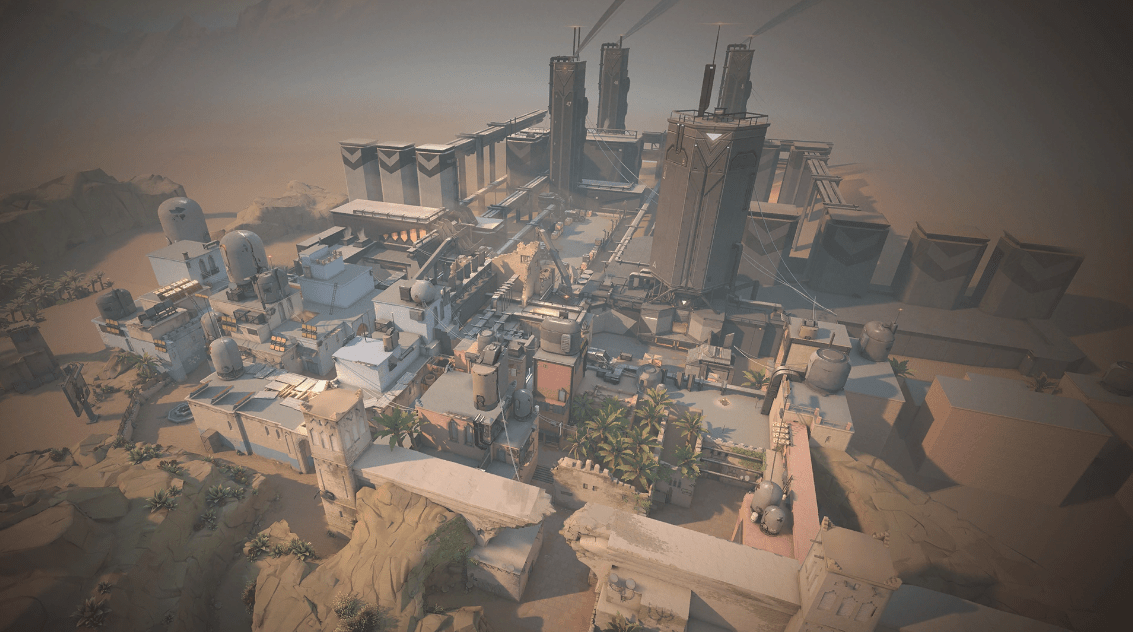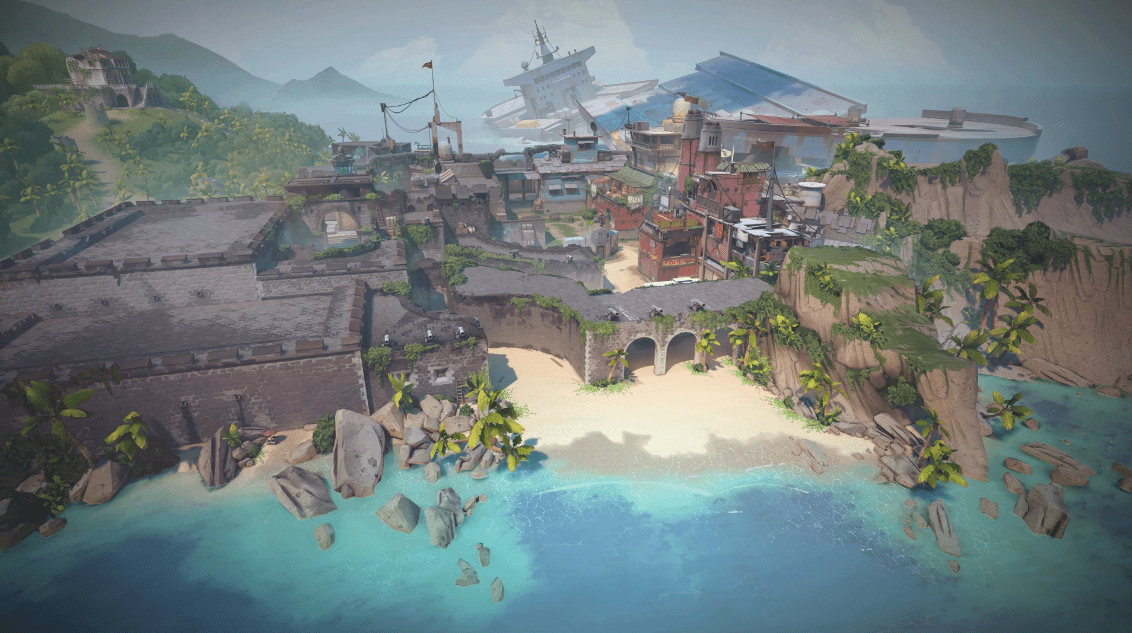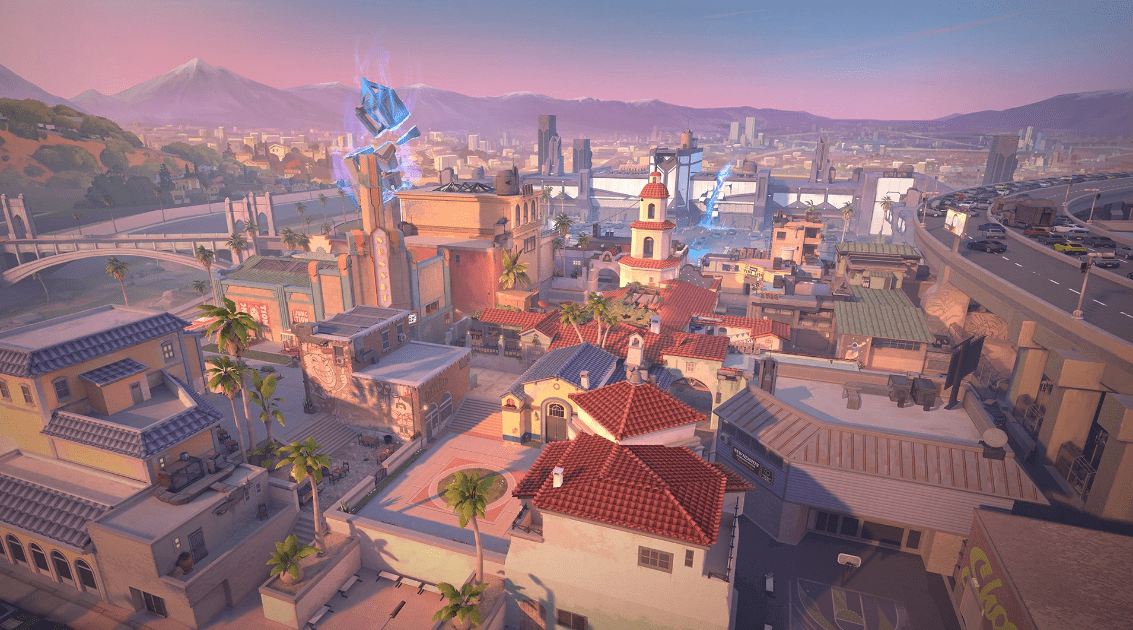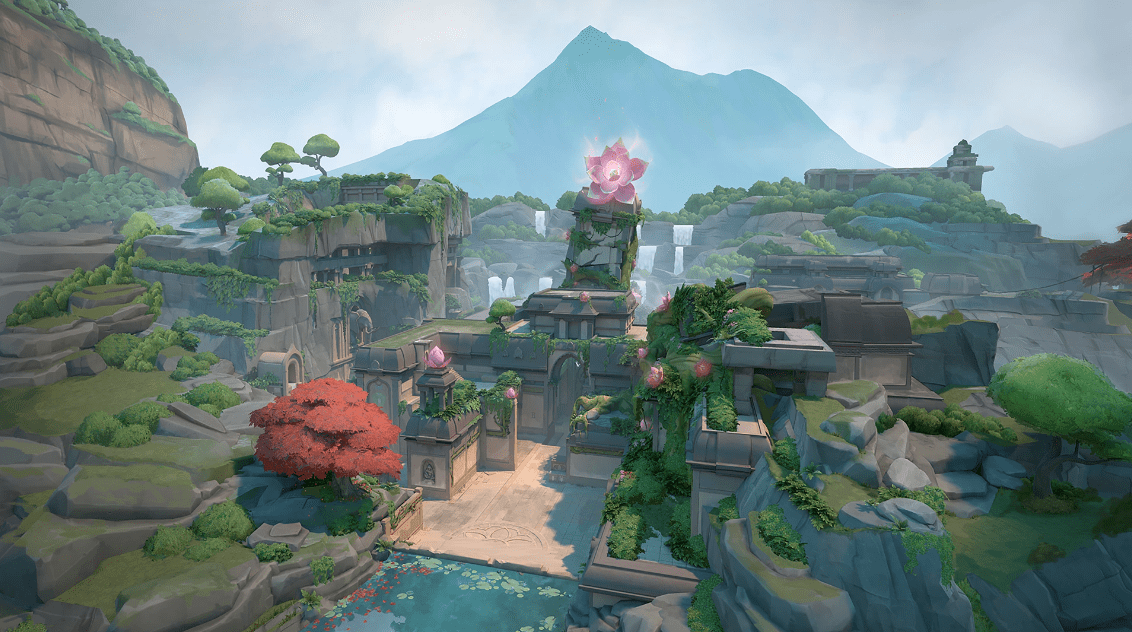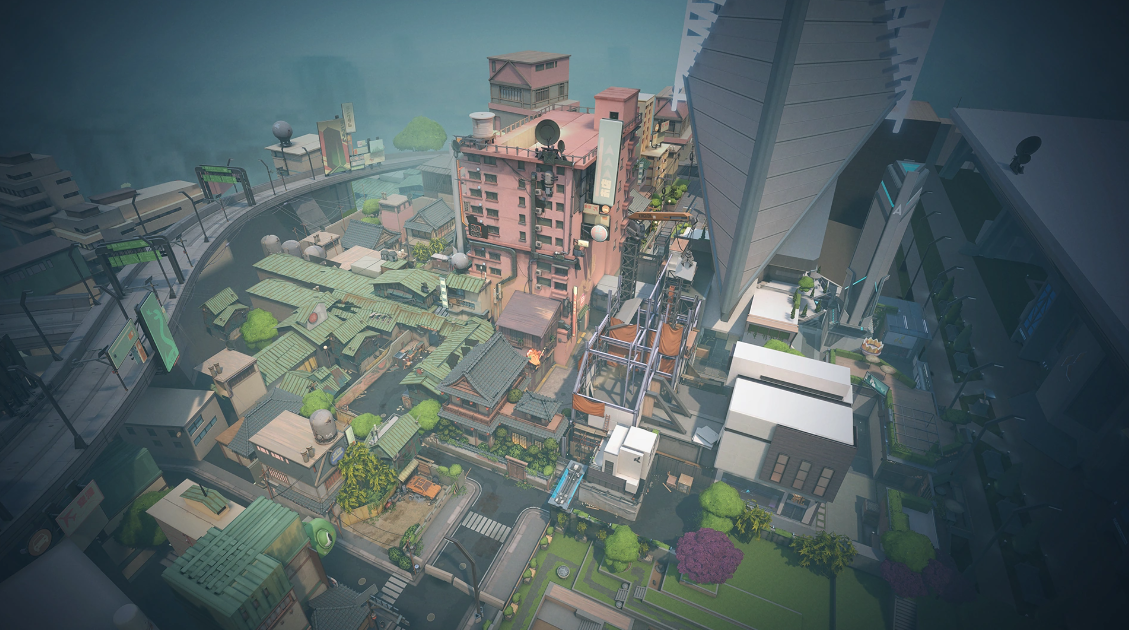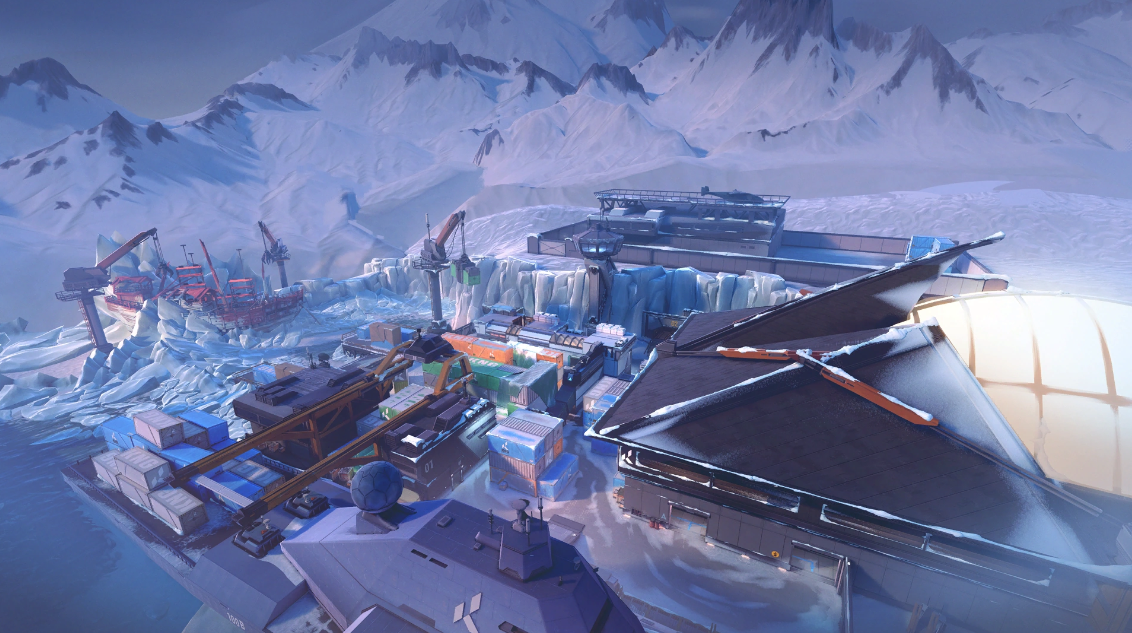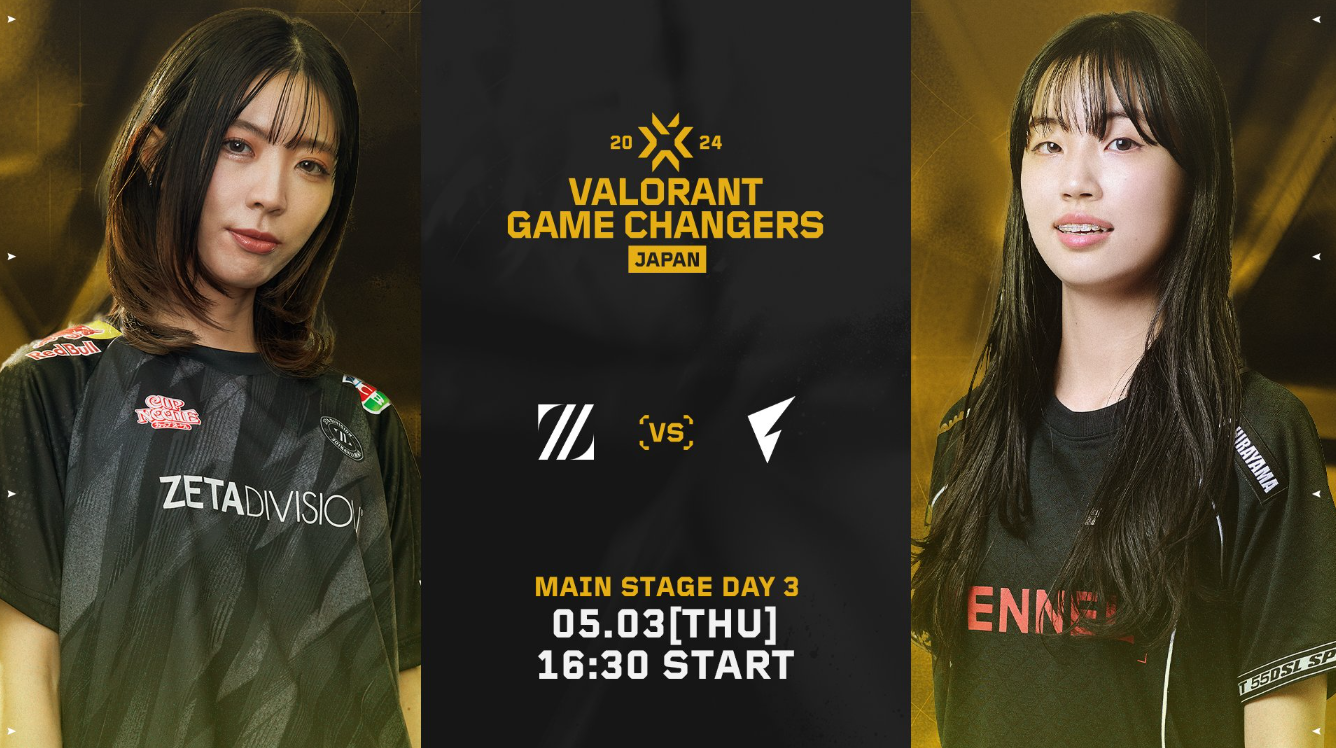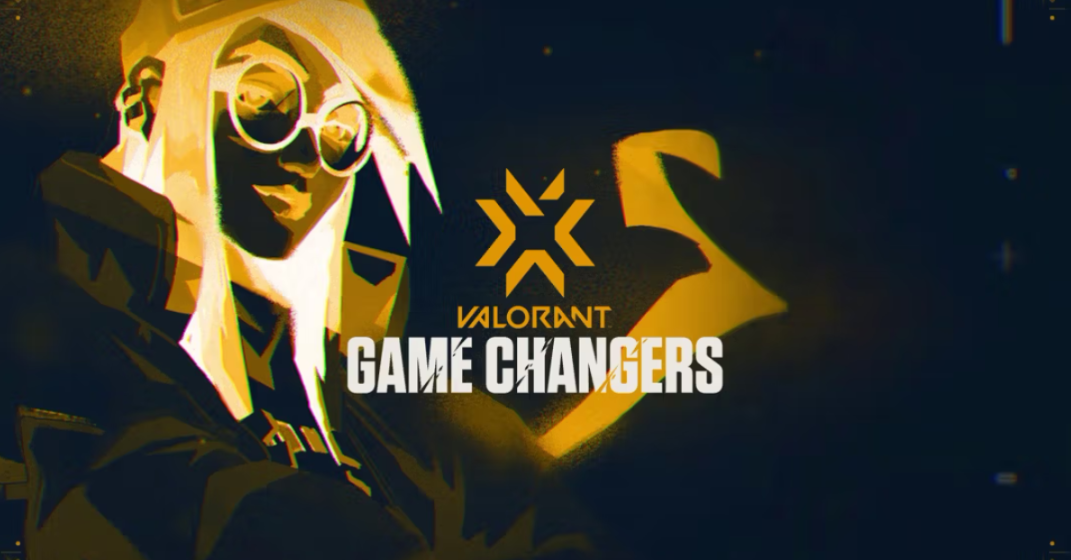Great Agent Combinations for Every Map in VALORANT
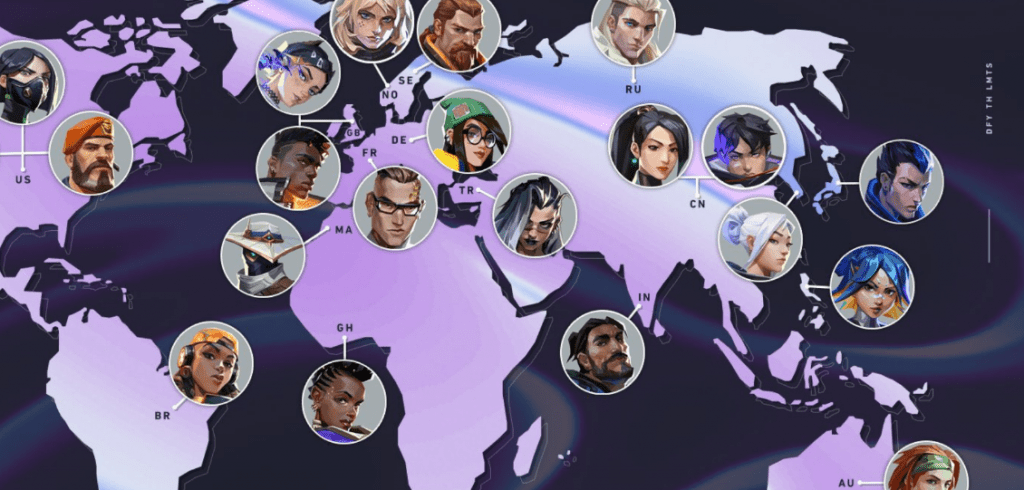
The first international LAN event for Valorant in 2024 has concluded, and we have witnessed some significant changes in the meta, specifically in the agents that teams are using on different maps. One of the main changes is how Sky’s nerfs have prompted teams to play with various initiators, particularly Gekko.
A few things have remained unchanged. Viper continues to be one of the top agents in the professional scene, and it seems that the meta featuring a pair of controllers is here to stay for now. Most teams are content with just one, and Raze still holds the position of the most picked duelist among all. Let’s take a closer look at the most successful agent compositions we saw on the stage in Madrid.
Table of Contents
Ascent Card
- Sova
- KAY/O
- Jett
- Omen
- Killjoy
In addition to the Sova, KAY/O, and Killjoy composition dominating Ascent in 2023, other maps saw a wider range of agent variations being used by teams. The recent Masters 2024 showcased both LOUD and Paper Rex, the top teams, experimenting with different agent compositions, including strategies involving paired controllers. This flexibility demonstrated the evolving nature of the meta and the willingness of teams to adapt and innovate. While the Jett and Killjoy duo remained a popular choice, teams also explored alternative agent combinations to gain a competitive edge. Some teams opted for a more aggressive approach, incorporating duelists like Reyna or Phoenix into their lineups. These agents provided exceptional fragging potential and the ability to create openings or secure crucial kills.
On the defensive side, Cypher continued to be a formidable sentinel choice. The recent buffs to Cypher’s abilities further solidified his position as a valuable asset in gathering information and locking down sites. His ability to set up traps and gather intel allowed teams to anticipate enemy movements and react accordingly. However, it’s worth noting that the meta is ever-evolving, and the agent compositions that proved successful at Masters 2024 may not necessarily remain dominant in the future. As teams continue to analyze gameplay data and experiment with new strategies, we can expect to see further shifts and adaptations in the agent compositions used on different maps in Valorant.
Map Bind
- Skye
- Gekko
- Raze
- Brimstone
- Viper
On the Bind map, teams have demonstrated a wide range of agent choices and strategies. While there isn’t a single dominant composition, several patterns have emerged among top teams. One popular approach is to have a balanced lineup consisting of one sentinel, one controller, two duelists, and one initiator. This composition allows for a versatile playstyle and adaptability on both attack and defense. Agents like Cypher or Killjoy excel as sentinels, providing strong site defense with their traps and surveillance tools. Controllers such as Brimstone or Omen offer valuable smoke screens for executing strategies and blocking enemy vision. In terms of duelists, Jett remains a popular choice due to her mobility and ability to secure kills. Raze also sees significant play on Bind, utilizing her explosive abilities to disrupt enemy positions and create chaos. These duelists excel in entry fragging and creating space for their team.
When it comes to initiators, Sova and Skye are frequently seen on Bind. Sova’s recon abilities and map control potential make him ideal for gathering information and identifying enemy positions. Skye’s utility, including her ability to scout and flash enemies, provides valuable support for pushing or defending sites. However, it’s important to note that the agent composition can vary depending on team preferences and strategies. Some teams may opt for a more aggressive lineup with multiple duelists, while others may prioritize a defensive approach with additional sentinels. In high-level play, communication and coordination are crucial on Bind. Teams must coordinate their agent abilities, map control, and execute well-coordinated pushes or retakes. The map’s unique teleportation mechanic adds an extra layer of complexity, requiring teams to strategically utilize teleporters to gain an advantage or surprise opponents. As the Valorant competitive scene continues to evolve, we can expect further experimentation with agent compositions and strategies on the Bind map. Adaptability and innovation will be key factors in finding success on this dynamic battleground.
Breeze Map
- Sova
- Jett
- Yoru
- Viper
- Astra
The Jett-Viper-Sova-KAY/O agent composition has been a prevalent choice on the Breeze map, with teams like Sentinels, LOUD, and EDG consistently opting for this lineup during the Masters Madrid tournament. However, it was Gen.G who found the greatest success with a rather unique agent composition on this particular map, deviating from the norm by excluding Cypher and incorporating Astra as a second controller. Gen.G’s decision to include Astra in their lineup on Breeze showcased their innovative approach to the game. Astra’s versatile kit, including her ability to deploy smokes, control areas of the map, and disrupt enemy movements with powerful gravity wells, proved to be a game-changer. The strategic placement of Astra’s smokes allowed Gen.G to manipulate the battlefield, creating advantageous situations for their team. While the Jett-Viper-Sova-KAY/O composition provided a strong foundation for map control and fragging potential, Astra’s inclusion as a second controller brought an additional layer of tactical depth.
The combination of Sova’s recon darts and Astra’s astral form abilities allowed Gen.G to gather crucial information and set up plays with precision. KAY/O’s disruptive abilities and ultimate further complemented the team’s strategy, disrupting enemy defenses and opening up opportunities for successful pushes. On the defensive side, Viper played a pivotal role in anchoring sites and denying enemy advances. Her toxic screen and poison cloud provided formidable barriers, forcing opponents to reconsider their approach. By strategically positioning her utility, Viper effectively controlled chokepoints and restricted enemy movements, giving Gen.G a significant defensive advantage. Gen.G’s success with this unconventional agent composition on Breeze demonstrated the ever-evolving nature of competitive Valorant. It highlighted the importance of strategic adaptation and the willingness of teams to explore new possibilities. As the meta continues to evolve, we can expect further experimentation with agent compositions on Breeze and other maps, as teams seek to gain a competitive edge in the ever-intensifying world of Valorant esports.
This composition uses two duelists. Jett is an excellent choice for two reasons:
- You don’t have the same impact on Rise due to the huge size of the Breeze card
- Having an operator in your arsenal for protection is critical
Contrasting with that, Gen.G opted to utilize Yoru to gain an instant advantage in the game and disrupt enemy attacks, thanks to the agent’s teleportation capabilities to various map locations. Finally, Sova remains a standard choice as reconnaissance abilities are essential.
Sunset Map
- KAY/O
- Gekko
- Omen
- Viper
- Sage
The latest map in Valorant made its debut at a prominent international event, and teams showcased a wide array of unique compositions tailored to their own strategies, rather than strictly adhering to a predefined meta. This demonstrated the evolving nature of team compositions and the flexibility that exists within the game. One notable observation was the diversity in the number and type of agents chosen. Some teams opted for two controllers, leveraging the utility and map control they provide, while others favored a composition with two initiators, emphasizing aggressive playstyles and early map control. A standout example was the approach taken by Paper Rex, who employed a highly innovative composition consisting of two initiators, two controllers, and Sage as their support agent. This unconventional lineup proved to be remarkably successful, with the Singaporean team securing victories in three out of their four matches. The synergy between their chosen agents and their strategic execution played a pivotal role in their achievements. It is important to note that while Paper Rex found success with their composition, it does not guarantee the same results for every team in the Premier mode.
Each team must carefully assess their own playstyle, strengths, and weaknesses to determine the most effective agent composition for their specific strategies and objectives. For instance, Sage’s presence in the Pacific representative’s lineup was instrumental in slowing down enemy advances during attacks, while Viper’s toxic screen and other abilities provided vital control over point B. This combination of crowd control and area denial proved effective in thwarting opponents’ plans and creating advantageous situations for the defending team. The versatility of team compositions on this new map allows for numerous variations and tactical approaches. As such, your team’s plan should revolve around planting the spike and employing your agents’ abilities to disrupt the enemy’s attempts at defusing it. During defense, strategic utilization of Viper’s and Omen’s smokes, along with the synergistic ultimates of KAY/O and Yoru, can provide the necessary control and advantage to secure the A or B site. As the competitive scene continues to evolve, teams will undoubtedly experiment with different agent compositions and strategies on this new map, refining their approaches based on their experiences and the evolving meta. Adaptability, communication, and a deep understanding of each agent’s strengths and synergies will be key to finding success on this dynamic battleground.
Lotus card
- Fade
- Raze
- Omen
- Viper
- Killjoy
The latest addition to Valorant’s map pool made its debut at a highly anticipated international event, sparking excitement and curiosity among players and fans alike. Teams approached this new map with a refreshing sense of individuality, opting for their own unique compositions rather than conforming to a predetermined meta. This demonstrated a willingness to explore new strategies and adapt to the evolving dynamics of the game. Interestingly, the diversity in team compositions was evident, with some squads favoring a double-controller setup to establish map control and deny enemy movements, while others embraced the aggression and map dominance provided by double initiators. However, it was Paper Rex that truly stood out with their innovative composition. They took a bold approach by fielding two initiators, two controllers, and Sage, deliberately avoiding any duelists in their lineup. This unconventional strategy paid off handsomely, as the Singaporean team secured victories in three out of their four matches. Their ability to synchronize the unique abilities of their chosen agents and execute well-coordinated tactics played a significant role in their success.
Nevertheless, it is important to recognize that success with a specific composition does not guarantee identical results for every team participating in the Premier mode. Each team must carefully analyze their own strengths, weaknesses, and preferred playstyles to determine the most effective agent composition that aligns with their strategies and objectives. For example, the Pacific representative leveraged the utility of Sage to impede enemy progress during attacks, while Viper’s versatile wall became a crucial tool in controlling the primary B site. This combination of crowd control and area denial allowed the team to disrupt their opponents’ plans and create advantageous situations. The beauty of team compositions lies in their adaptability and countless variations. Consequently, your plan should revolve around securing the Spike and employing your agents’ abilities to hinder the opponent’s defusal attempts. During defensive rounds, strategic utilization of Viper’s and Omen’s smokes, complemented by the impactful ultimates of KAY/O and Yoru, can provide the necessary control and enable your team to assert dominance over the primary A or B site. As the competitive landscape continues to evolve, teams will undoubtedly experiment with different agent compositions and tactics on this new map, refining their strategies based on experience and the ever-changing meta. Adaptability, effective communication, and a profound understanding of each agent’s strengths and synergies will be instrumental in achieving success in this dynamic and highly competitive environment.
Split Map
- Skye
- Raze
- Omen
- Viper
- Cypher
The Sentinels proved to be an unstoppable force on the Lotus map in Madrid as they dominated their opponents, emerging victorious in all four matches. Their success was attributed to their strategic employment of a double-controller composition, with Fade taking on the role of the lone initiator. This tactical approach allowed them to establish a firm grip on the map and dictate the flow of the game. Interestingly, in contrast to previous trends, Skye, who was once a popular choice on the Lotus map, has fallen out of favor among most teams due to recent nerfs. This shift in agent preferences demonstrates the ever-changing nature of the game and the constant need for teams to adapt their strategies. The Lotus map is not commonly associated with the presence of Viper. However, when paired with Omen, the synergy between their abilities has proven to be highly effective in professional matches. Viper’s smokes play a vital role in controlling the A zone, whether it be in defensive setups or during aggressive pushes, as they divide the expansive area into smaller, more manageable sections, granting the team greater control and strategic advantages.
The influence of Omen’s abilities cannot be understated on this particular map. His teleportation and obscuring smokes allow for swift and decisive movements, enabling teams to swiftly seize control of key areas. Additionally, Raze’s explosive kit makes her a formidable force, capable of breaching into the site with brute force and catching opponents off guard. It is worth noting that having Killjoy on the team is crucial for capturing and maintaining control over the C point, as well as gathering valuable information on potential lurking opponents. This strategic allocation ensures that the rest of the team can focus their efforts on securing control over the A area. As the competitive landscape in Valorant continues to evolve, it is important for teams to stay adaptable and innovative in their approach to agent compositions and tactics. The Lotus map, like all others, presents unique challenges and opportunities that require careful analysis and strategic decision-making. By understanding the strengths and synergies of their chosen agents and effectively communicating and coordinating their efforts, teams can strive for success in the dynamic and ever-evolving world of professional Valorant.
Icebox card
- Sova
- Jett
- Viper
- Harbor
- Killjoy
The Icebox map has made a triumphant return to the map pool, revitalizing the competitive scene in Valorant. As teams grapple with the challenges presented by this frosty battleground, a prevailing trend has emerged with the majority of teams opting for compositions featuring two initiators and one controller, with Viper assuming the role of the sole controller on the map. This strategic choice allows for a careful balance of aggressive initiation and map control. However, it was the LOUD team that truly made waves with their agent composition. They unleashed the potent combination of Viper and Astra, showcasing their mastery of area denial and control. The synergy between these two agents proved to be a formidable force, effectively shutting down the opponent’s attempts at gaining a foothold on the map. Viper’s ability to deploy smokes and toxic screens ensures a constant veil of protection over the A site, while Astra’s cosmic abilities further reinforce the team’s control through the deployment of her own smokes. This coordinated control strategy extends to offensive maneuvers as well, allowing for calculated aggression and map dominance.
The agile Jett brings an additional dimension to the team’s strategy. Leveraging her swift movement abilities, she can breach onto sites with the assistance of Astra’s utility, catching opponents off guard and creating opportunities for her teammates to capitalize on. Meanwhile, Killjoy’s inclusion in the lineup provides invaluable information gathering capabilities. Positioned strategically to monitor potential lurkers in the mid-map area during defensive rounds, her array of abilities can be instrumental in both capturing and reclaiming control of pivotal points. It is important to note that strategies and agent compositions are subject to continuous evolution as teams adapt to the ever-changing competitive landscape. The Icebox map, with its unique layout and challenges, demands adaptability, teamwork, and a deep understanding of agent synergies. As the battle unfolds on this frosty terrain, teams will continue to experiment, refine their strategies, and push the boundaries of what is possible in the pursuit of victory.

